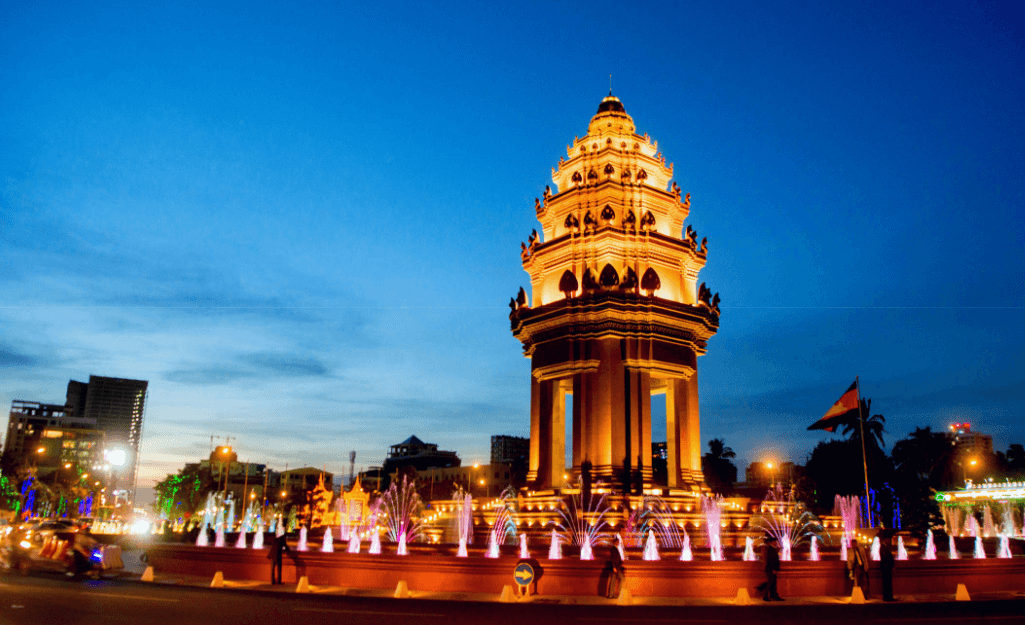The Independence Monument, known as the Cambodia National Monument, holds a significant place in the heart of the Cambodian people. Designed to commemorate the country's independence, the monument stands as a symbol of national pride and resilience. In this article, we will explore the historical significance, architectural features, cultural importance, and various aspects of the Independence Monument, providing you with a comprehensive understanding of this iconic landmark.
Historical Significance of Cambodia National Monument
The construction of the Independence Monument marked a pivotal moment in Cambodia's history. It was during the mid-20th century that Cambodia, under the leadership of King Norodom Sihanouk, gained independence from French colonial rule. The monument stands as a tribute to the country's efforts to secure its sovereignty and serves as a constant reminder of Cambodia's journey to independence.
Architectural Features
The Independence Monument boasts an impressive architectural design that combines both traditional Khmer and modernist elements. Standing at a height of approximately 20 meters, the monument is adorned with intricate carvings, intricate motifs, and a beautiful lotus-shaped stupa at its pinnacle. The use of local materials, such as stone and concrete, adds to its distinct aesthetic appeal.
Symbolism and Design
The design of the Independence Monument carries deep symbolic meaning. The lotus-shaped stupa, a traditional Buddhist architectural element, represents purity and enlightenment. The five-tiered pedestal symbolizes the five principles of peaceful coexistence. The monument's overall design reflects the rich cultural heritage of Cambodia and its aspirations for peace, unity, and progress.
Importance for Cambodia
The Independence Monument holds immense importance for the Cambodian people. It serves as a tangible symbol of national pride, unity, and resilience. The monument stands as a constant reminder of Cambodia's hard-fought independence and the sacrifices made by its people. It also plays a crucial role in shaping the country's cultural identity, serving as a gathering place for various events and celebrations.
Visitor Information
For those planning to visit the Independence Monument, it is conveniently located in the heart of Phnom Penh, making it easily accessible to tourists. The monument can be visited throughout the year, and entrance is free of charge. It is advisable to check the opening hours in advance, as they may vary on certain days.
Nearby Attractions
While exploring the area around the Independence Monument, visitors can discover a wealth of nearby attractions. The iconic Royal Palace, with its stunning architecture and rich history, is a must-visit destination. The National Museum, housing an impressive collection of Khmer art and artifacts, is also in close proximity. Additionally, the vibrant riverside area offers a bustling atmosphere with restaurants, cafes, and markets.
Cultural Significance of Cambodia National Monument
The Independence Monument holds deep cultural significance for Cambodia. It is not only a commemorative structure but also a place of cultural significance. Traditional ceremonies and customs are often observed at the monument, and it serves as a venue for various cultural events, such as dance performances, music concerts, and art exhibitions. The monument plays a vital role in preserving and promoting Cambodia's cultural heritage.
Events and Celebrations
Throughout the year, the Independence Monument serves as a focal point for numerous events and celebrations. The Cambodian Independence Day, celebrated annually on November 9th, sees the monument adorned with colorful decorations and attracts crowds of people who gather to pay their respects and participate in festivities. The monument also hosts other cultural and national celebrations, reinforcing its central role in Cambodian society.
Preservation Efforts
Preserving the historical and architectural value of the Independence Monument is of utmost importance. Various conservation efforts have been undertaken to ensure the monument's longevity and structural integrity. The Cambodian government, in collaboration with local and international organizations, has implemented measures to protect and maintain this cherished landmark, safeguarding it for future generations to appreciate and enjoy.
Criticisms and Controversies surrounding Cambodia National Monument
As with any significant monument, the Independence Monument has not been without its share of controversies and criticisms. Some individuals have raised concerns about the monument's historical accuracy or its political implications. However, the monument continues to be revered by the majority of Cambodians as a symbol of their nation's independence and collective spirit.
Conclusion
The Independence Monument stands tall as a testament to Cambodia's struggle for independence and its rich cultural heritage. Its architectural beauty, historical significance, and cultural importance make it a must-visit destination for both locals and tourists alike. A visit to the monument allows individuals to pay tribute to Cambodia's journey towards freedom and gain a deeper understanding of the country's vibrant past.
FAQs
- How tall is the Independence Monument?
The Independence Monument stands at a height of approximately 20 meters.
- Can visitors enter the monument?
No, visitors cannot enter the monument. However, they can appreciate its architectural beauty from the outside.
- Are there any guided tours available?
While there are no specific guided tours for the monument itself, there are tour operators in Phnom Penh who offer comprehensive city tours that include a visit to the monument.
- What is the best time to visit the monument?
The monument can be visited throughout the year. However, it is recommended to visit during Cambodia's dry season (November to March) when the weather is more pleasant.
- Are there any restrictions on photography?
Photography is generally allowed at the Independence Monument. However, it is advisable to be respectful and considerate of other visitors while taking photographs.
References
- "Independence Monument" by Canby Publications
Website: https://www.canbypublications.com/
- "Cambodia's Independence Monument: History and Significance" by Cambodian Cultural Profile Foundation
Website: https://www.cambodianculture.org/
- "Symbolism and Meaning of Cambodia's Independence Monument" by Cambodia Ministry of Culture and Fine Arts
Website: https://www.mocfa.gov.kh/
